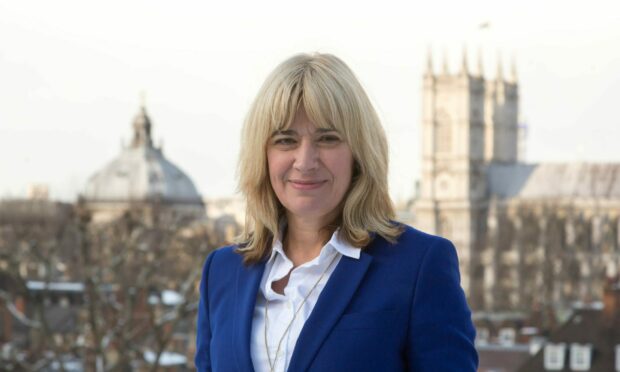Christine Middlemiss has a tough job on her hands as deadly avian flu sweeps across Britain.
Already, more than one million turkeys have been culled, putting huge pressure on food production, devastating businesses – and prompting alarm about Christmas dinner.
Farms in Aberdeenshire have been hit hard, including the loss of 72,000 chickens to the virus in the Turiff area.
Ms Middlemiss, as the chief veterinary officer for the UK, hopes to be the bearer of better news this festive season.
“Normally it starts to tail off in spring as migratory birds leave,” she says. “But this year’s been different because the virus over-summered in our native birds and that first wave of infection that we had, that’s where it’s come from. Our native birds coming back.
“Some species are all back and some are coming back. We’re watching very closely to see what they’re bringing with them.
“It does seem to be the same strain, H5N1, and we’re not seeing as great numbers of dead migratory birds now as we saw the same time last year.”
But, in an interview with the Press and Journal, she adds a note of caution: “We are worried, we are watching.”
Moray roots
Born in Montrose, Ms Middlemiss spent younger days at school in Kinloss, Moray, before moving to Edinburgh.
After studying at the vet school in Glasgow, she worked in southern Scotland then onto Northumberland and Cumbria.
She set up a vet practice in East Lothian on her way to getting the senior post in the UK.
While she represents UK interests, Scotland has its own chief vet, Sheila Voas, who deals with areas of responsibility held at Holyrood.
That means there are differences in the way the outbreak is being treated – much like how Covid rules changed north and south.
Birds in large flocks in Scotland are not housed during this outbreak, but they are housed in England.
It led to splits of opinion in public. We reported last week that Ms Voas was concerned people had not learned from the need to stay outdoors during the pandemic.
One producer in Turiff, Aberdeenshire, lost thousands of chickens after housing them, which led the virus to spread through the flock.
Ms Middlemiss says: “When birds are outside they are spread out so when infection gets in it doesn’t go through them like it does in a shed. Welfare for birds, if they’re used to being outside is not so good. But equally if they’re inside there are more ‘controllables’.
“In England we’ve had a large number of cases, mostly in East Anglia but beginning to pop up elsewhere. That balance of risk about population outside, spread out, versus protecting them by housing them swung the balance.
“A lot of people ask why didn’t you house them sooner – it’s because you have to weigh up the risks on both sides. There’s not a ref flashing light that says ‘stop’, house them now.”
The unusually long outbreak has caused serious damage to wildlife all over the country, including major nesting sites and migratory grounds.
In the east, these sites are often the most likely areas for large-scale poultry production.
Larger farms developed on low lying land where grain is commonly locally available. But these areas are often the first point of call for birds coming from the north and Russia on their way south.
We’re watching every day and every week.
– Christine Middlemiss.
Ms Middlemiss says this balance could inform future planning for animal safety and food.
“There are balances – good things and bad things,” she says.
“Traditionally our commercial poultry and pigs are on the east side because that’s where the grain growing areas are, so it made sense. What we see in those areas is there’s often a lot of lying water, ponds as well, man-made water courses. For bird flu, those attract wild birds.
“My call would be, wherever you’re siting poultry, whether indoor or outdoor, think about these things. Think about water areas that are going to attract wild birds, woodland that will attract wild birds, and the risks that might bring.”
‘Absolutely devastating’
Beyond the natural world, businesses are suffering in the outbreak.
“It is a huge number of birds and for those producers affected it is absolutely devastating,” she says.
“Turkeys are in this country bred all year round but the vast majority is at Christmas so it’s really hard for them.
So is Christmas dinner at risk too?
“Overall we produce about nine million turkeys for Christmas every year so there’s still plenty of supply there in the system,” she adds.
“We’re watching every day and every week.
“It’s difficult to predict long-term, but the good news is we’re not seeing the big uptick in migratory birds.
“We’re getting more and more confident that for the next three or four weeks it’s not going to get worse but as soon as we start seeing an uptick in migratory bird infections that will be concerning.”


